Solution for the Kinematics of Non-H-D Couplings Applied to RPCR Mechanism
Abstract
1. Introduction
2. Materials and Method
2.1. The Coordinate Frames and the Condition Equations
2.2. Finding the Motions from the Pairs of the Mechanism
2.3. Solving the Equations for Finding the Positional Parameters of the Mechanism
- The existence of the two solutions of Equation (18) shows that for a given position of the driving element, there are two positions of the intermediate element. This fact is not anticipated initially, and the two assemblage positions are presented in Figure 5.
- In Equation (20), the ratio existence requires that
3. Results and Discussion
4. Conclusions
Author Contributions
Funding
Data Availability Statement
Conflicts of Interest
References
- Denavit, J.; Hartenberg, R.S. A kinematic notation for lower-pair mechanisms based on matrices. J. Appl. Mech. 1955, 22, 215–221. [Google Scholar] [CrossRef]
- Barbin, E.; Menghini, M.; Volkert, K. Descriptive Geometry, the Spread of a Polytechnic Art—The Legacy of Gaspard Monge; Springer Nature: Cham, Switzerland, 2019; pp. 3–18. [Google Scholar]
- Tsai, L.-W. Mechanism Design: Enumeration of Kinematic Structures According to Function; CRC Press: Boca Raton, FL, USA, 2000; 328p. [Google Scholar]
- Johnson, K.L. Contact Mechanics; Cambridge University Press: Cambridge, UK, 1985; pp. 84–106. [Google Scholar] [CrossRef]
- Hills, D.A.; Nowell, D.; Sackfield, A. Mechanics of Elastic Contacts; Elsevier Butterworth-Heinemann: Oxford, UK, 1993; pp. 198–226. [Google Scholar]
- Gladwel, G.M.L. Contact Problems in the Classical Theory of Elasticity; Sijthoff & Noordhoff: The Hague, The Netherlands, 1980; 716p. [Google Scholar]
- Alaci, S.; Ciornei, F.; Filote, C. Considerations upon a new tripod joint solution. Mechanika 2013, 19, 567–574. [Google Scholar] [CrossRef]
- Urbinati, F.; Pennestrì, E. Kinematic and Dynamic Analyses of the Tripode Joint. Multibody Syst. Dyn. 1998, 2, 355–367. [Google Scholar] [CrossRef]
- Wang, X.F.; Chang, D.G.; Wang, J.Z. Kinematic investigation of tripod sliding universal joints based on coordinate transformation. Multibody Syst. Dyn. 2009, 22, 97–113. [Google Scholar] [CrossRef]
- Phillips, J. Freedom in Machinery; Cambridge University Press: Cambridge, UK, 2007; 448p. [Google Scholar]
- Alaci, S.; Buium, F.; Ciornei, F.-C.; Dobincă, D.-I. Tetrapod coupling. Mech. Mach. Sci. 2018, 57, 349–356. [Google Scholar] [CrossRef]
- Yi, L.; Leinonen, T. On the Dimensional Synthesis of Spatial Four-and Five-Bar Linkage. In Romansy 14: Theory and Practice of Robots and Manipulators, Proceedings of the Fourteenth CISM-IFToMM Symposium; Bianchi, G., Guinot, J.-C., Rzymkowski, C., Eds.; Springer: Vienna, Austria, 2002; pp. 407–419. [Google Scholar]
- Watanabe, K.; Sekine, T.; Nango, J. Kinematic Analysis of RSCR Spatial Four-Link Mechanisms. Trans. Jpn. Soc. Mech. Eng. Ser. C 1997, 63, 2482–2489. [Google Scholar] [CrossRef]
- Lenarčič, J.; Bruno Siciliano, B. Advances in Robot Kinematics; Springer: Cham, Switzerland, 2020; pp. 1–6; 98–108. [Google Scholar] [CrossRef]
- Altuzarra, O.; Kecskeméthy, A. Advances in Robot Kinematics; Springer: Cham, Switzerland, 2022; pp. 30–38. [Google Scholar] [CrossRef]
- Tsai, C.Y.; Lin, P.D. The mathematical models of the basic entities of multi-axis serial orthogonal machine tools using a modified Denavit–Hartenberg notation. Int. J. Adv. Manuf. Technol. 2009, 42, 1016–1024. [Google Scholar] [CrossRef]
- Lee, R.S.; Lin, Y.H. Development of universal environment for constructing 5-axis virtual machine tool based on modified D–H notation and OpenGL. Robot. Comput.-Integr. Manuf. 2010, 26, 253–262. [Google Scholar] [CrossRef]
- Benignus, C.; Buschner, P.; Meier, M.K.; Wilken, F.; Rieger, J.; Beckmann, J. Patient Specific Instruments and Patient Individual Implants—A Narrative Review. J. Pers. Med. 2023, 13, 426. [Google Scholar] [CrossRef] [PubMed]
- Vorro, J.; Bush, T.R.; Rutledge, B.; Li, M. Kinematic measures during a clinical diagnostic technique for human neck disorder: Inter- and intraexaminer comparisons. Biomed. Res. Int. 2013, 2013, 950719. [Google Scholar] [CrossRef] [PubMed]
- Greco, C.; Weerakkody, T.H.; Cichella, V.; Pagnotta, L.; Lamuta, C. Lightweight Bioinspired Exoskeleton for Wrist Rehabilitation Powered by Twisted and Coiled Artificial Muscles. Robotics 2023, 12, 27. [Google Scholar] [CrossRef]
- Dimentberg, F.M. The Screw Calculus and Its Applications in Mechanics; Foreign Technology Division translation FTD-HT-23-1965; US Department of Commerce: Washington, DC, USA, 1969; pp. 1632–1667.
- Hunt, K.H. Kinematic Geometry of Mechanisms; Oxford University Press: Oxford, UK, 1990; pp. 30–51. [Google Scholar]
- Davidson, J.K.; Hunt, K.H. Robots and Screw Theory: Applications of Kinematics and Statics to Robotics; Oxford University Press Inc.: New York, NY, USA, 2004; pp. 59–94. [Google Scholar]
- Angeles, J. Spatial Kinematic Chains: Analysis–Synthesis–Optimization; Springer: Berlin/Heidelberg, Germany, 1982; pp. 189–218. [Google Scholar]
- McCarthy, J.M.; Soh, G.S. Geometric Design of Linkages; Springer: Berlin/Heidelberg, Germany, 2010; pp. 253–279. [Google Scholar]
- McCarthy, J.M. Introduction in Theoretical Kinematics, 3rd ed.; MIT Press: Boston, MA, USA, 2018; pp. 103–108. [Google Scholar]
- Hartenberg, J.R.; Denavit, J. Kinematic Synthesis of Linkages, 1st ed.; McGraw-Hill Inc.: New York, NY, USA, 1964; pp. 343–368. [Google Scholar]
- Uicker, J.J., Jr.; Denavit, J.; Hartenberg, R.S. An Iterative Method for the Displacement Analysis of Spatial Mechanisms. J. Appl. Mech. 1964, 31, 309–314. [Google Scholar] [CrossRef]
- Alaci, S.; Pentiuc, R.D.; Ciornei, F.C.; Buium, F.; Rusu, O.T. Kinematics analysis of the swash plate mechanism. IOP MSE 2019, 568, 012017. [Google Scholar]
- Yoshikawa, T. Foundations of Robotics: Analysis and Control; MIT Press: Boston, MA, USA, 2003; pp. 259–262. [Google Scholar]
- Maxfield, B. Engineering with Mathcad; Elsevier Butterworth-Heinemann: Oxford, UK, 2006; pp. 287–289. [Google Scholar]


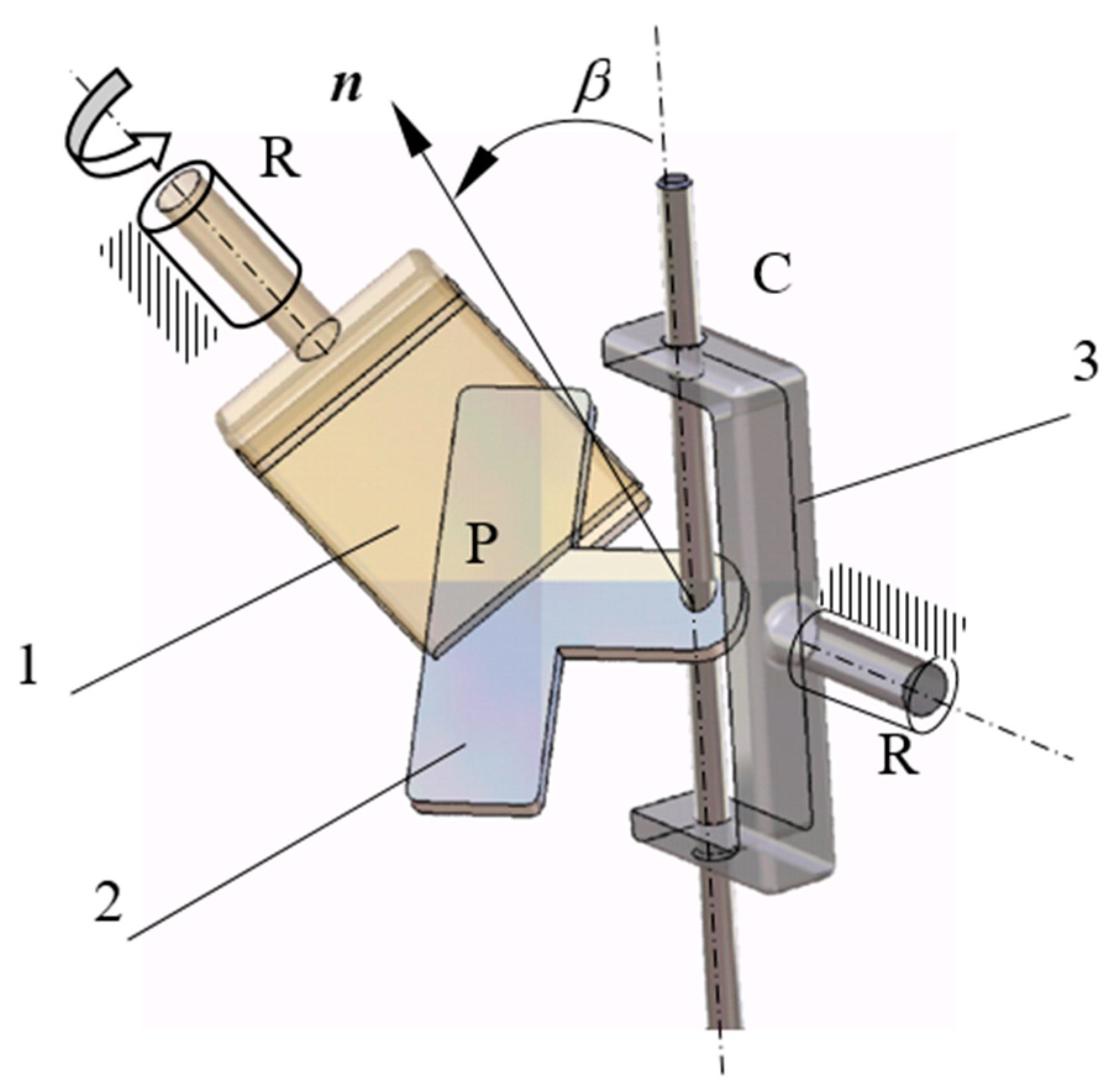
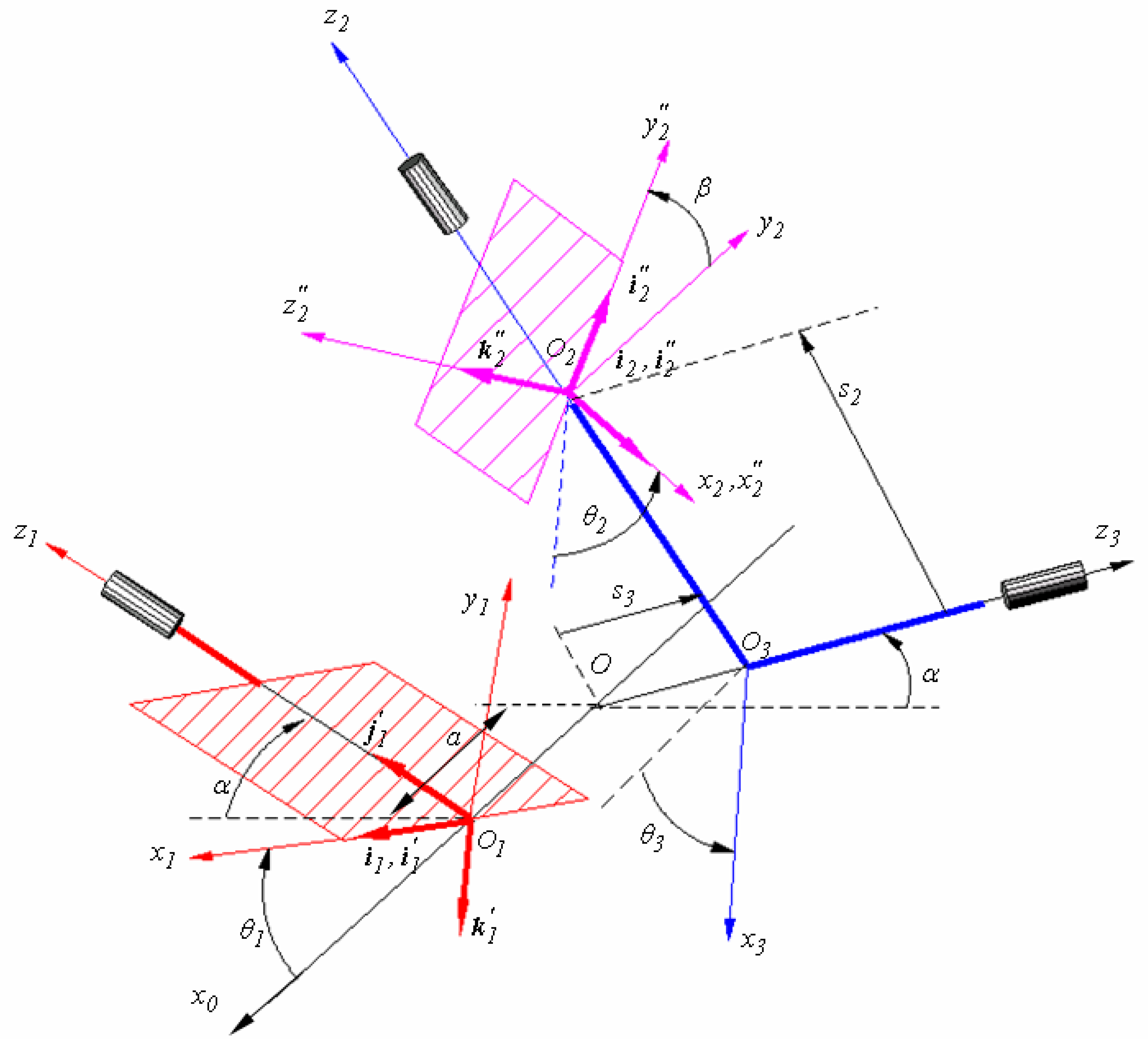
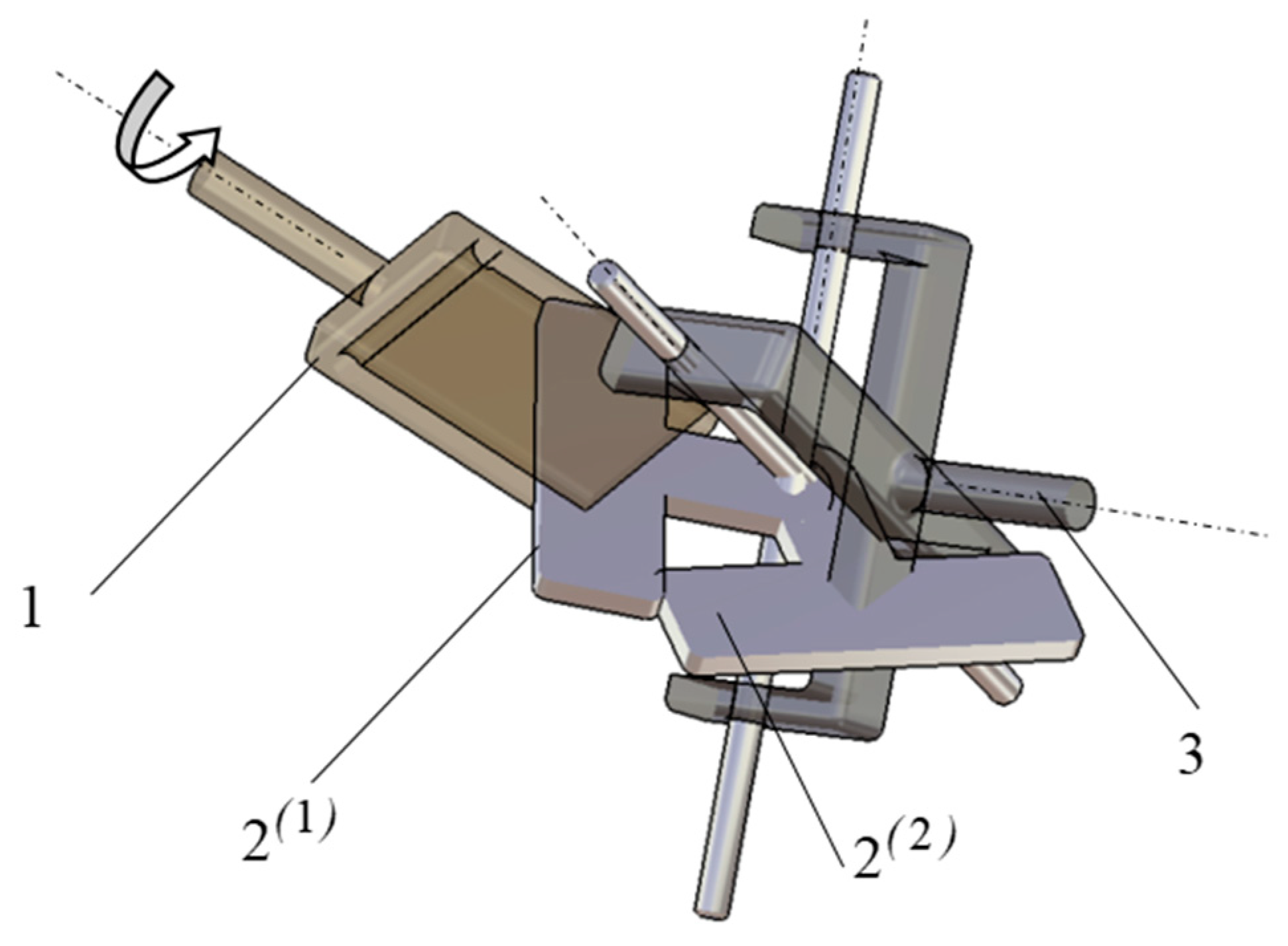
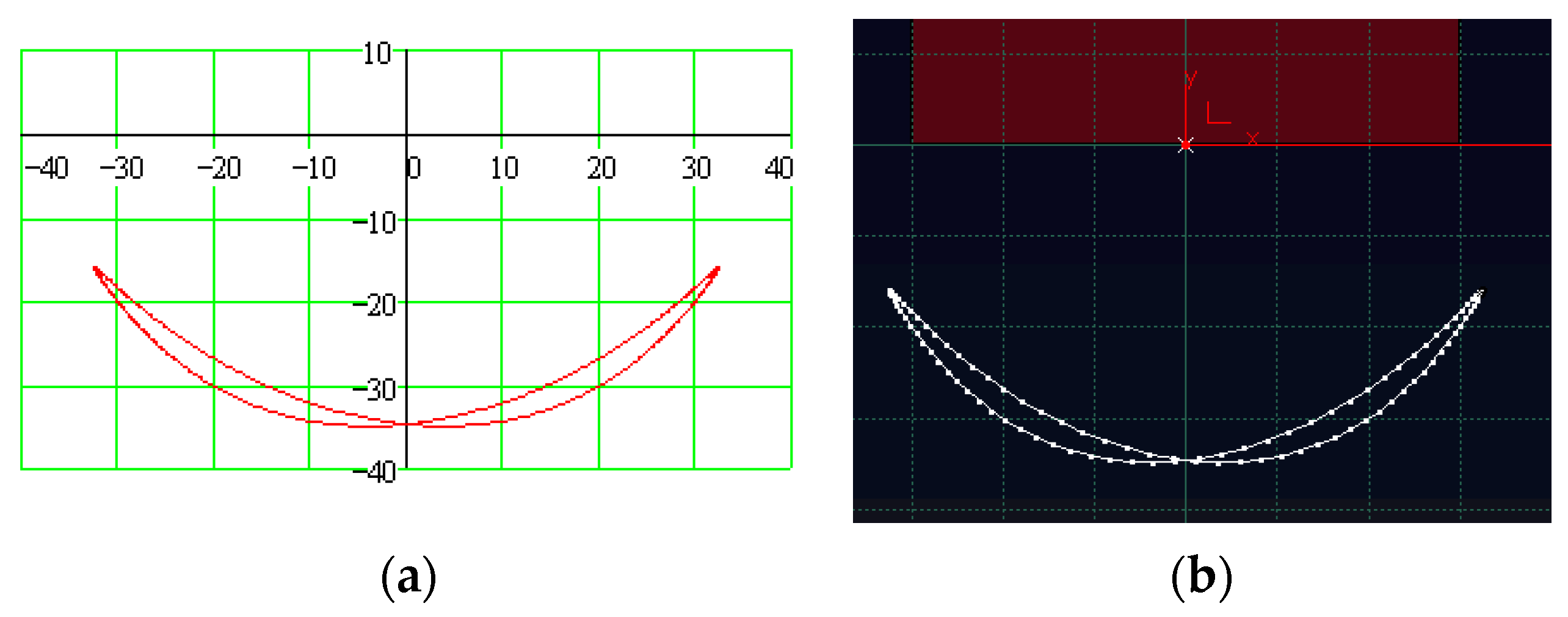
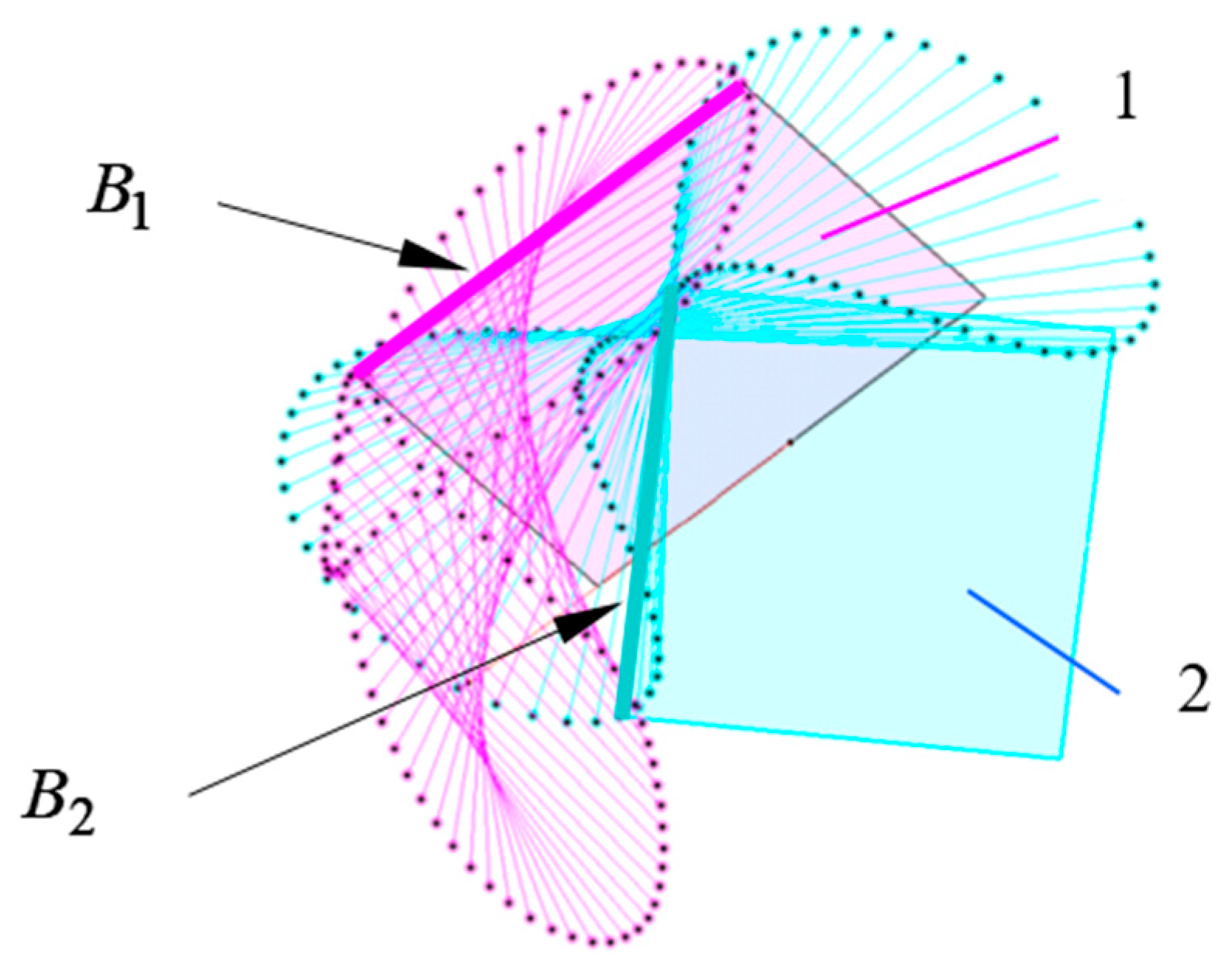

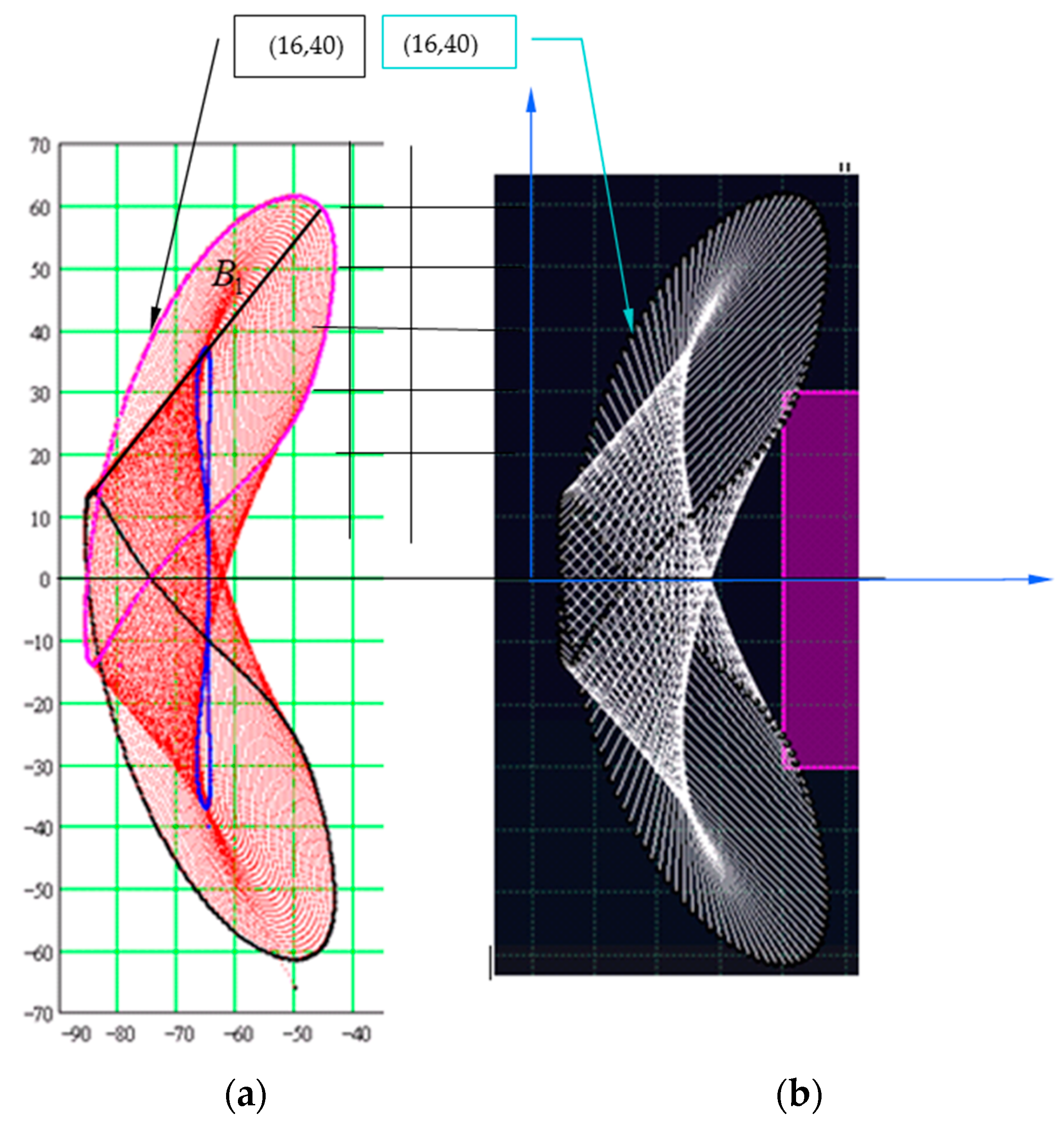
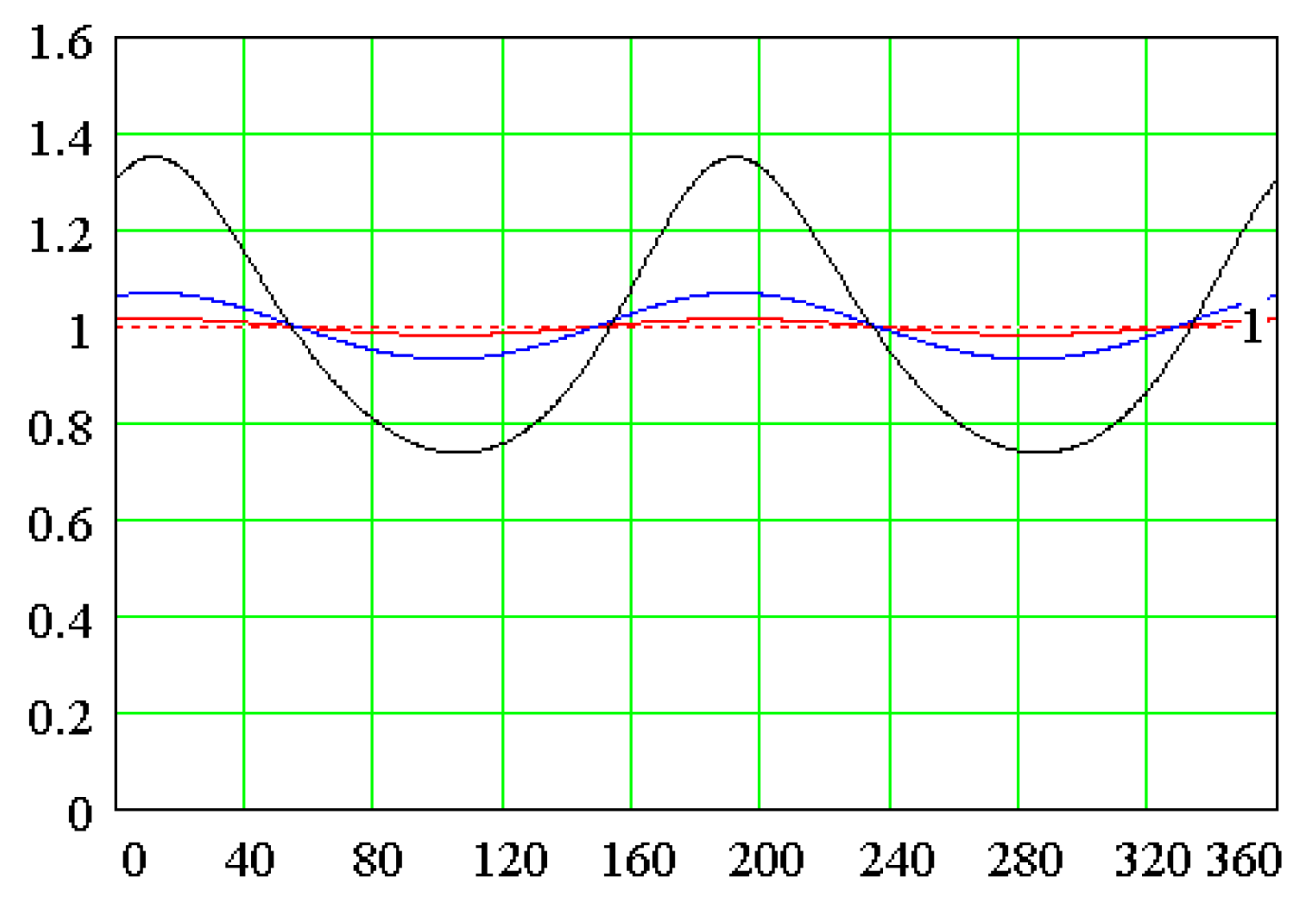
Disclaimer/Publisher’s Note: The statements, opinions and data contained in all publications are solely those of the individual author(s) and contributor(s) and not of MDPI and/or the editor(s). MDPI and/or the editor(s) disclaim responsibility for any injury to people or property resulting from any ideas, methods, instructions or products referred to in the content. |
© 2023 by the authors. Licensee MDPI, Basel, Switzerland. This article is an open access article distributed under the terms and conditions of the Creative Commons Attribution (CC BY) license (https://creativecommons.org/licenses/by/4.0/).
Share and Cite
Alaci, S.; Ciornei, F.-C.; Romanu, I.-C.; Ciocirlan, T.-M.; Ciornei, M.-C. Solution for the Kinematics of Non-H-D Couplings Applied to RPCR Mechanism. Axioms 2023, 12, 357. https://doi.org/10.3390/axioms12040357
Alaci S, Ciornei F-C, Romanu I-C, Ciocirlan T-M, Ciornei M-C. Solution for the Kinematics of Non-H-D Couplings Applied to RPCR Mechanism. Axioms. 2023; 12(4):357. https://doi.org/10.3390/axioms12040357
Chicago/Turabian StyleAlaci, Stelian, Florina-Carmen Ciornei, Ionut-Cristian Romanu, Toma-Marian Ciocirlan, and Mariana-Catalina Ciornei. 2023. "Solution for the Kinematics of Non-H-D Couplings Applied to RPCR Mechanism" Axioms 12, no. 4: 357. https://doi.org/10.3390/axioms12040357
APA StyleAlaci, S., Ciornei, F.-C., Romanu, I.-C., Ciocirlan, T.-M., & Ciornei, M.-C. (2023). Solution for the Kinematics of Non-H-D Couplings Applied to RPCR Mechanism. Axioms, 12(4), 357. https://doi.org/10.3390/axioms12040357





